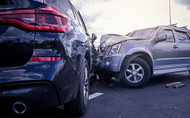Prevent Accidents with Good Tires
Posted by Agota Szabo on Feb 15th 2022
Unfortunately, sometimes there is not much we can do to prevent accidents. Yet, there are still things we can be in charge of.
For one, the tires on our cars! We have full authority to choose the tires we wish to have on our vehicles.
So, the type and quality tire set we can mount on our vehicles matters.
Can Good Tires Actually Prevent Accidents?
Yes, proper tires can actually prevent a car accident. - This is the short answer.
When it comes to tires and their performing capabilities, it is important to get a good-quality tire set.
Why? Well, the answer is simple.
Good tire sets will save you from headaches.
Let's make one thing clear: by "good tire set" we do not mean expensive models. We are referring to tires which provide the needed traction, can hold tire pressure correctly, have even treadwear, and their controllability is on point.
Most new and properly maintained tires will provide you with the necessary performance, helping to prevent a car accident. In other words, they make sure the driver does not lose control over the vehicle during the drive.
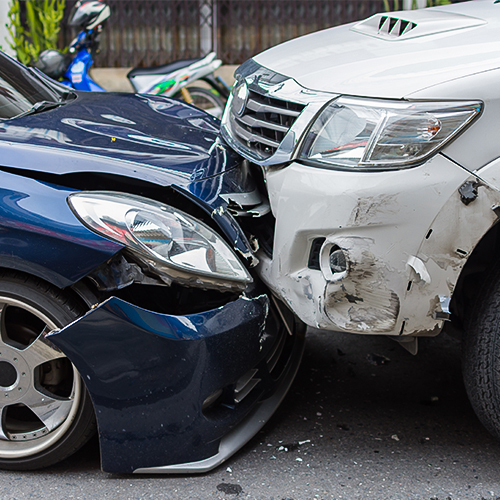
Tire Maintenance is Important to Prevent Accidents
Regular tire checks can prevent some car accidents. Like other vehicle parts, tires also need some TLC to perform in a safe manner.
So, what can you do to ensure the tires mounted on your vehicle are offering a safe drive?
There are multiple factors to take into consideration when checking for tire problems. Old tires do not necessarily lead to you losing control over the car. Instead, not maintained tires are the bigger problem.
These are the factors you need to consider when checking your tires:
Tire Pressure
PSI, otherwise known as the air pressure in the tires, is partially responsible for the tire's driving safety.
In other words, an accident will likely occur when the PSI in the tire is incorrect. When the tire pressure is incorrect means that it is either lower or higher than the manufacturer's recommendations.
Both cases ruin the tire's contact with the road surface. They minimize the tire's gripping capabilities and performance, minimizing the tire's responses to the driver's instructions. This can also ruin the stopping distances when you hit the brakes.
Additionally, driving the tire at incorrect air pressure levels will result in the tire's tread getting damaged. What we mean by this is that it creates irregular wear formations. However, if the pressure in the tire is low for too long, it can also damage the sidewalls.
All in all, air pressure is important, as it will guarantee better traction and handling throughout the drive.
Tread Wear
Tire treads can wear in different manners. If the wear is ideal, it is even and it ensures the tire's lengthened usability.
However, in some instances, the treads' wear can be irregular. This entails premature wear, shoulder scuffing, tread damage, dry rot, and other irregularities which will significantly shorten the tire's usability.
Tires worn in such a manner do not offer the needed performance. They can easily cause problems as the tire's tread is a major factor when it comes to its handling.
Car accidents happen when drivers lose control over their vehicles. Therefore, the tires' lack of road grip and handling will not help you in such instances.
Furthermore, low treads can also cause issues. If you do not have a tread gauge, the penny test will help you out. Lincoln's head is the indicator of the tread life left on the tire. If the tread does not reach Lincoln's head, you should look for a new tire set soon.
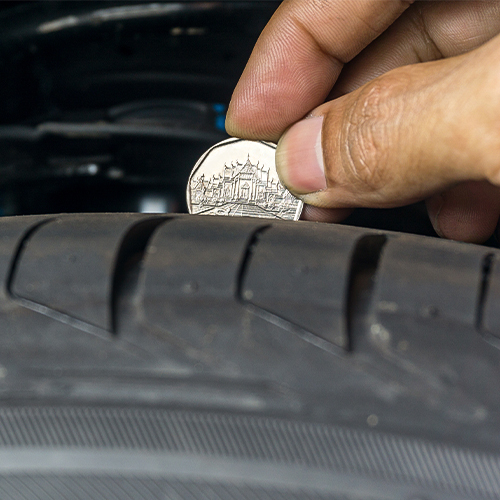
Traction
Tires are designed with specific tread patterns in order to ensure their grip on the road surface. This is true for all tires, no matter if they are intended for all season, summer, or winter use.
As a result, we should take a closer look at the tread life of the tires and their tread details often is crucial.
If you notice that the tread is nearing its end, you will need to look for new tires sooner rather than later. Once the tread wears out, the tire will no longer be able to offer the grip necessary to conquer versatile weather conditions.
This is especially true for winter tires, which utilize their intricate details to generate biting edges. When the siping wears out, these tires are not longer promote snow or ice performance safety.
While winter tires are most evidently affected by this, you will also need to replace summer and all season tires when they are unable to provide traction.
Wheel Alignment
Making sure your wheel alignment is even is essential.
An irregular alignment will result in uneven tread wear. In other words, it will greatly shorten the tire's lifespan and ruin its performing capabilities.
The risk of accidents significantly increases when the tires are unable to perform in their intended manner. Therefore, check the vehicle's alignment as soon as you notice issues (vibrations, the vehicle pulling to the side, etc).
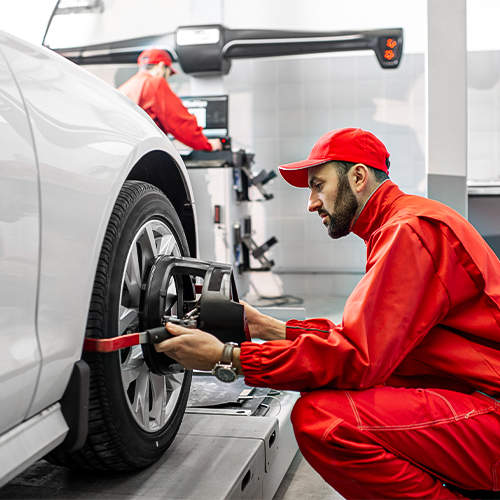
Tires Rotated Regularly
Rotating your tires regularly, after every 5,000 miles is essential. Not only does this help preserve the tread wear of the footprint, but it also ensures the tire's driving safety.
When a tread wears in an irregular manner, it affects the tire's various performing capabilities. Therefore, including tire rotations into your tire maintenance schedule will keep the tire's exceptional performing grip and capabilities.
But what happens when you don't rotate tires? Well, read our blog post about it and find out the side effects of not rotating tires.
The Difference between New and Worn Tires: Can They Prevent Accidents?
It should go without saying that worn-out and good tire sets do not perform in the same manner.
Let's take a look at how new and worn-out tire sets behave.
Traction and Road Grip
Worn tires do not offer the same traction as new tires. This is especially evident in bad weather conditions.
While new tires provide the needed grip, worn-out tires are unable to perform safely on wet roads or in snow. The worn tread does not feature the necessary biting edges needed for secure traction.
Therefore, these tires can easily lead to an accident when the weather turns for the worse.
Hydroplaning
Hydroplaning happens when water or slush trapped on the road surface cuts off the tire's surface contact. Thankfully this can only occur in wet weather situations.
Good or new tires feature wide grooves that are able to channel these obstacles away from the tire's footprint. However, older tires are unable to do this.
Instead, water and slush cut off the surface contact, making the vehicle skid, making the driver lose their handling over the steering wheel. The risk of hydroplaning is a big factor that should be considered since even a smaller puddle can cause an accident.
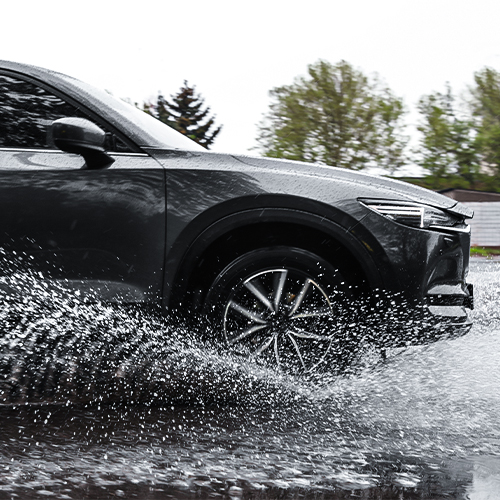
Rubber Compounds
Cold weather or heat accumulation are also problems new and worn tires face differently. This is due to their rubber compounds.
Good tire sets still have enough rubber to optimize their flexibility in versatile temperatures, which includes winter conditions as well. On the other hand, when the tread wears out, the tire does not have the needed compound to optimize the performance even in extreme cold.
In such cases, the lack of rubber on the tire leads to a loss of traction.
Driving Durability
Most modern tires are manufactured with a steel belt structure to ensure their durability. For versatile vehicles different tire sets are needed.
Apart from the new vs. old debate, we also need to make sure the right tires are mounted on the car. Using the correct tire set, with the necessary durability, will help avoid a car crash easily.
Issues can arise when the air pressure is not correct in the tire. In those cases, no matter the structural durability, the tire will not provide the needed durability.
Handling
The road contact of the tire's footprint optimizes its controllability and steering. In other words, if the tire provides the necessary road grip, it will ensure the driver's handling of the car.
The vehicle's steering responsiveness relies on the tires. Therefore, if worn-out tires are used on the car, the possibility of a car accident will rise. These tires will not be able to ensure the driver has full command over the vehicle.
This is especially dangerous during the vehicle's performance at high speeds.
Braking Distances
The stopping distance is another major factor to consider. Worn-out tire sets are unable to provide the short braking necessary for secure driving.
When the vehicle does not stop in a timely manner after the braking, it is time to replace the tires. While it might not seem like a big issue in dry weather, it will create problems as soon as the weather conditions change.
Furthermore, drivers cannot know when they need to brake to avoid accidents. When the tires do not offer a safer braking distance, an accident is just around the corner.
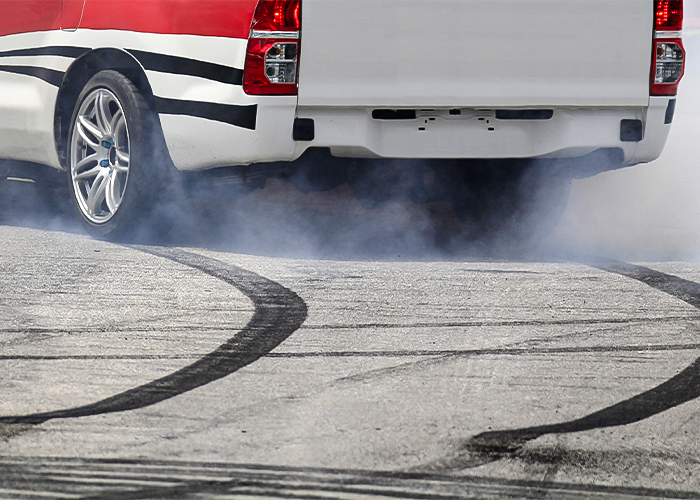
Possibility of Tire Blowouts
If we have not mentioned accidents enough yet in this post, let's talk about them one more time.
Tire blowouts are especially dangerous. This is the complete failure of the tire, which usually happens while they are in motion.
This type of tire damage can be caused by different factors, but the end result is the same.
Driving pressure and heat accumulate on the tire, the tire is unable to handle it, and it is no longer fit to be driven on. In lesser cases (which are still extremely dangerous) the tire will "just" pop in one area, causing rapid air pressure loss. However, the tire can literally explode - which can also damage the vehicles.
Therefore, if you notice issues with your tires, it is best to get them checked out. If your mechanic is unable to fix the problem, replace the old tire set with a new one.
Do Wornout All Season, Summer, and Winter Tires Act the Same Way to Prevent Accidents?
Tires meant for different weather conditions sport versatile treads. As a result, they act a bit differently when their tread wears out.
The big issue with winter or snow tires is the conditions they are designed to be used in. The tire needs snow and ice traction for its secure performance, in order to prevent accidents. If they are not able to provide that, it's time to replace them.
However, by this, we do not mean that all season and summer tires cannot fail.
Without a doubt, improperly kept and worn tire sets can easily cause an accident, no matter which weather conditions they are intended for.
If you are in need of new tires, look no further. Check out TireMart.com's excellent tire selection with just a few clicks.













